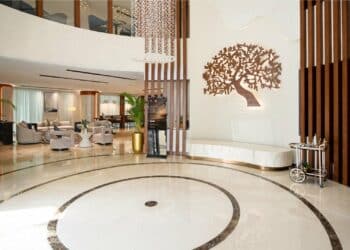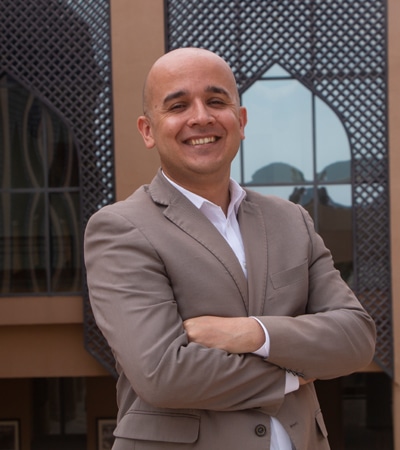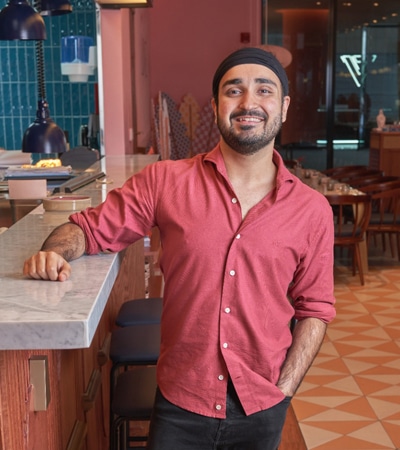
From towering urban landmarks to serene desert retreats, the Middle East is home to some of the world’s most breathtaking hotel designs. These properties are more than just places to stay—they are masterpieces of architecture, blending cultural heritage with contemporary luxury. Whether shaped by cutting-edge innovation or inspired by centuries-old traditions, each hotel on this list offers a distinctive visual and sensory experience. Join us as we explore the ten best-designed hotels in the region, where artistry and hospitality meet in perfect harmony.
Jumeirah Burj Al Arab, Dubai, UAE
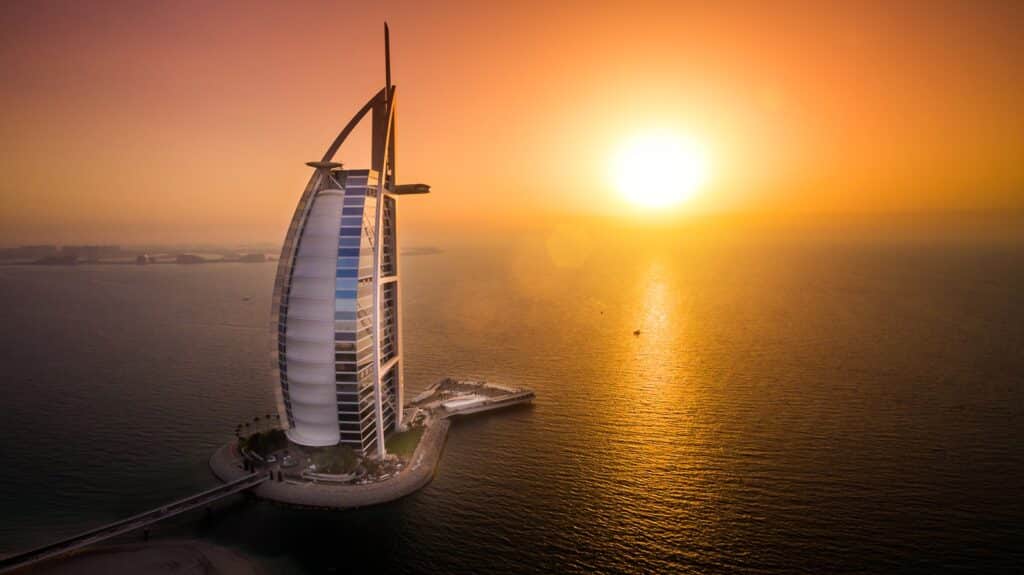
A Timeless Design
Rising from the Arabian Gulf like a gleaming beacon of modern luxury, the Jumeirah Burj Al Arab stands as an architectural marvel and an enduring symbol of Dubai’s ambition. Its striking sail-shaped silhouette is instantly recognisable, a landmark that has captivated visitors and residents alike for decades. When it first opened, the hotel redefined luxury, setting an entirely new benchmark in the world of hospitality. One journalist famously remarked that the experience was beyond the standard five-star rating—giving birth to the now-legendary “seven-star” reputation. Photographs barely do justice to the meticulous craftsmanship and vision that brought this masterpiece to life. Instead, the true magnificence of the Jumeirah Burj Al Arab is best understood through the countless stories woven into its design and construction.
Inspired by the graceful form of an Arabian dhow sail, the Jumeirah Burj Al Arab is more than just a hotel—it is a feat of engineering. Soaring 321 metres into the sky, it surpasses London’s The Shard and is just shy of the Empire State Building’s height. Built on an artificial island 280 metres from Dubai’s shoreline, the hotel is home to the world’s tallest atrium, a vast open space that reaches an astonishing 180 metres, framed by towering gold-clad columns.
The mastermind behind its bold exterior was British architect Tom Wright of WS Atkins, who sought to create a structure that reflected Dubai’s rich maritime heritage while embodying a futuristic vision. Inside, renowned Chinese designer Khuan Chew of KCA International infused the interiors with an opulent blend of colour, texture, and grandeur. The hotel’s palatial spaces are adorned with over 30 varieties of Statuario marble—the same rare stone favoured by Michelangelo. Adding to its lavishness, approximately 1,790 square metres of 24-carat gold leaf embellish various surfaces, while Swarovski crystals—more than 86,500 in total—add a shimmering touch to the Junsui bar’s entrance.
Atlantis The Royal, Dubai, UAE
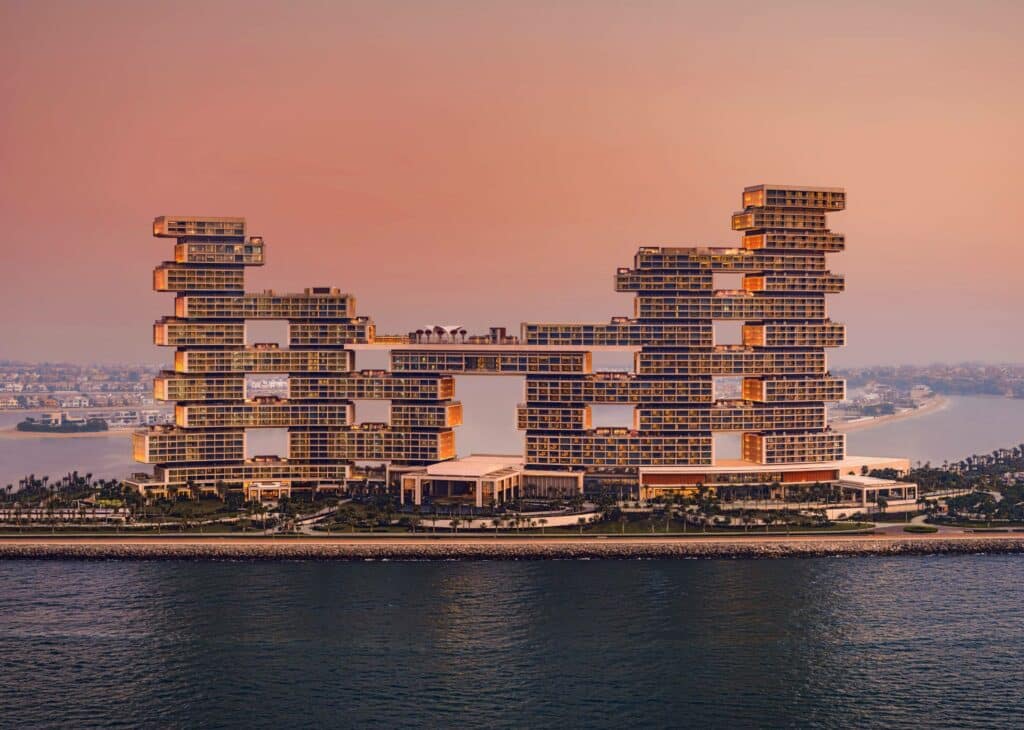
A New Era of Architectural Grandeur
Atlantis The Royal, a visionary resort redefining luxury. More than a hotel, this architectural marvel on The Palm’s crescent is a testament to bold design and innovation. A global collaboration led by Kohn Pedersen Fox Associates (New York), G.A Group (London), Sybille de Margerie (Paris), and WET Design (California) has resulted in a 406,000-square-metre masterpiece that seamlessly blends indoor and outdoor living.
Rather than a traditional skyscraper, Atlantis The Royal embraces a modular, stacked-block concept, inspired by ancient aqueducts and Arabian heritage. The six towers, connected by a striking 90-metre sky bridge, create a dynamic structure offering panoramic views of the Arabian Gulf and Dubai skyline. The bridge, home to The Royal Mansion suite and a spectacular infinity pool, was meticulously lifted into place over 10 hours using advanced engineering techniques.
Water, a symbol of life in the desert, is a central theme. Unlike Atlantis The Palm’s oceanic inspiration, this resort pays homage to the Bedouins, with water features like the ‘Droplets’ lobby sculpture and the immersive Deluge water elevators. Even lighting reflects this theme, with raindrop-shaped pendants adorning ceilings.
Inside, the design continues the water narrative, from soft blues in Seascape rooms to shimmering pearls in Horizon Penthouses and bold coral hues in the Panoramic Penthouses. Atlantis The Royal isn’t just a resort—it’s an immersive architectural experience, blending ancient inspiration with modern luxury, redefining Dubai’s hospitality landscape.
Our Habitas AlUla, Saudi Arabia
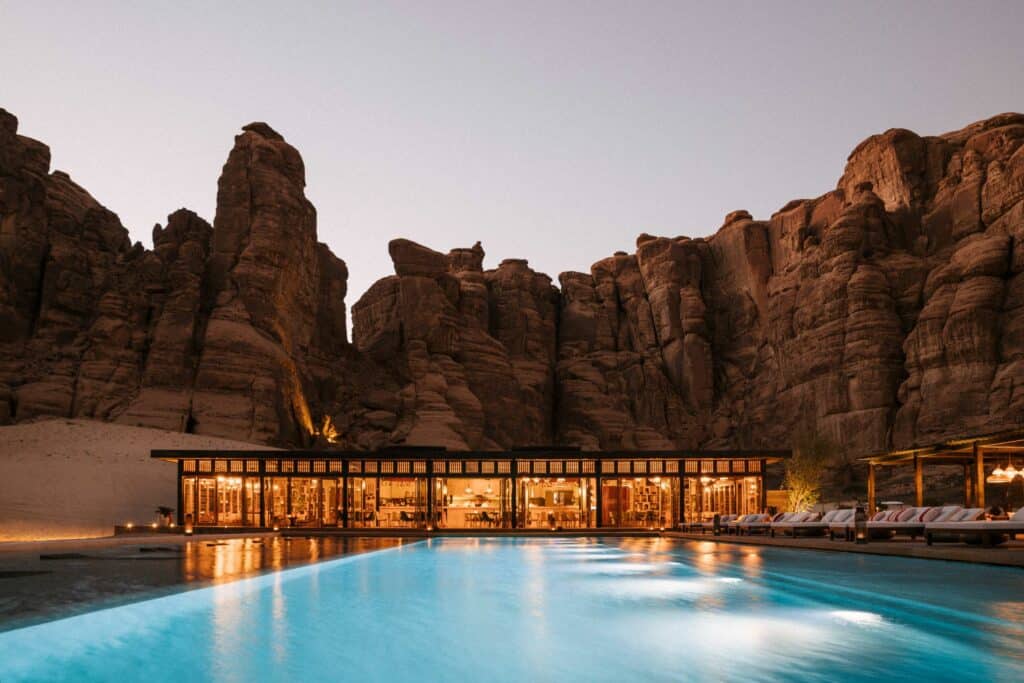
Where Nature and Design Unite
Set within the UNESCO-listed Hegra, Our Habitas AlUla is more than a hotel—it’s a seamless dialogue between contemporary hospitality, heritage, and nature. Designed by the brand’s in-house studio, the retreat embraces the dramatic topography of Saudi Arabia’s Ashar Valley, ensuring a minimal footprint while offering a deeply immersive experience. Every architectural choice respects the land, blending modern comfort with the raw beauty of sandstone cliffs and ancient landscapes.
At the heart of the design philosophy is a commitment to meaningful human connection and environmental harmony. The 96 villas, arranged across three categories—Alcove, Canyon, and Celestial—offer varying perspectives of the desert. The Alcove Villas provide an intimate experience framed by towering rock formations, while the Canyon Villas place guests within the valley’s natural corridors. The Celestial Villas, designed for stargazing, come equipped with telescopes and thoughtful wellness touches, including yoga mats and in-room massage services.
Beyond the accommodations, Ashar Deck and an expansive infinity pool provide panoramic views of the surrounding terrain. The property follows a modular construction approach, allowing for prefabricated structures to be assembled on-site with minimal disruption to the ecosystem. Sustainability extends beyond building methods, with eco-friendly transport such as e-bikes and buggies encouraging guests to explore at a slower pace.
Community integration plays a vital role in the resort’s identity. From sourcing local produce to working with artisans on handcrafted décor, Our Habitas AlUla contributes to the region’s micro-economy. This includes textiles woven by female artisans and ceramics inspired by Al-Ahsa’s heritage pottery.
Smart design meets conscious hospitality at Our Habitas AlUla, where nature, culture, and sustainability intersect to offer a retreat that respects the past while embracing the future.
Raffles Doha & Fairmont Doha, Qatar
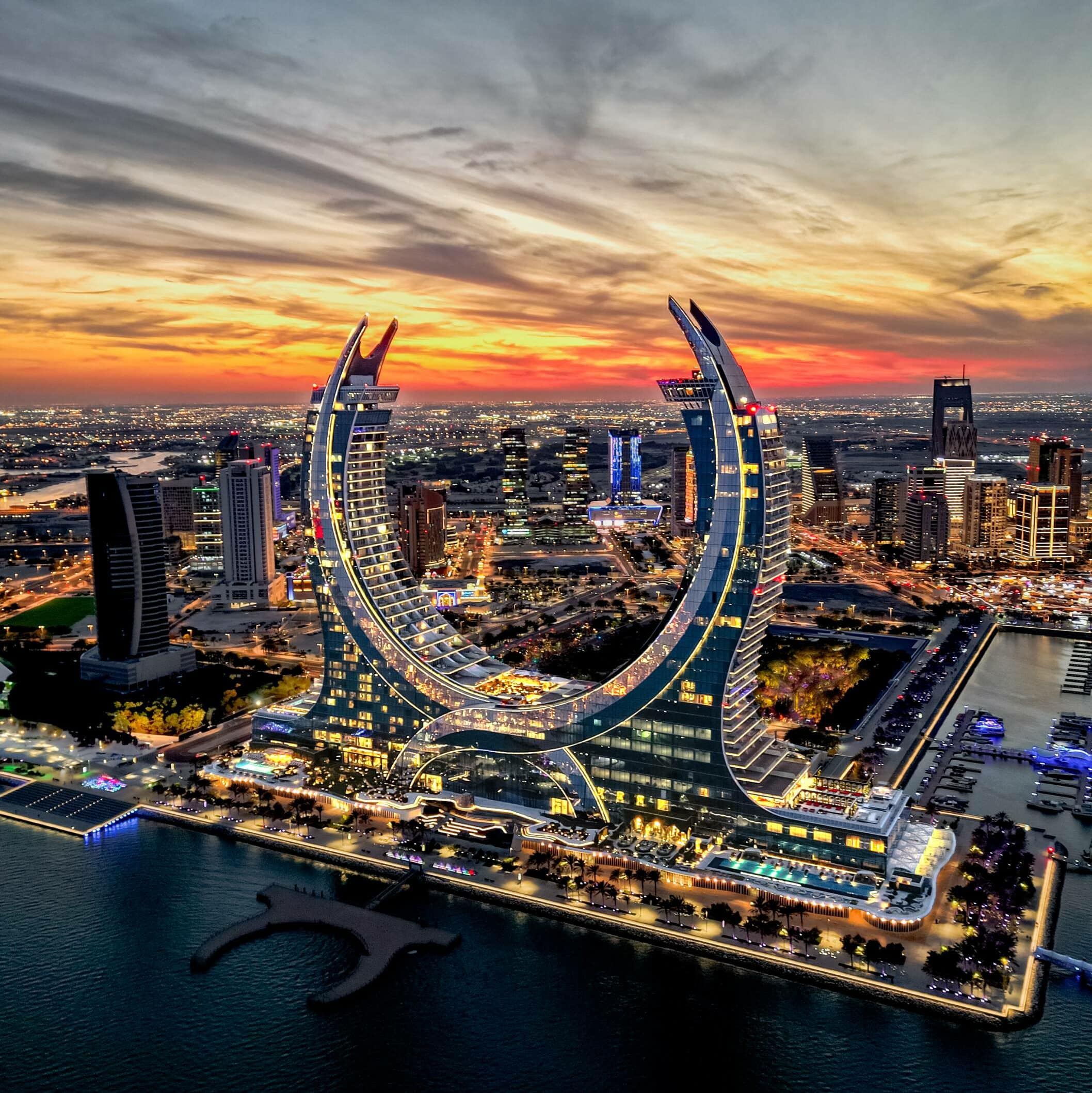
An Architectural Symphony
Rising from Lusail Marina, Katara Towers dominates Doha’s skyline with its striking crescent-shaped silhouette. Home to Raffles Doha and Fairmont Doha, the dual-branded property draws inspiration from Qatar’s national emblem—the crossed curved swords—a symbol of strength, heritage, and progress.
Designed by Dar Al-Handasah with inspiration from the late Zaha Hadid, the towers embody fluidity and movement, reflecting Hadid’s futuristic curves. At 211 meters high, the scimitar-shaped structure serves as both a gateway to Lusail City and a testament to Qatar’s bold vision. Its design echoes traditional dhow boats, merging cultural storytelling with contemporary grandeur.
The curved glass façades shimmer under the Qatari sun, mirroring the Arabian Gulf, while interiors blend Arabian opulence with modern elegance. Raffles Doha offers an ultra-luxurious all-suite retreat, while Fairmont Doha presents a sleek yet culturally rich interpretation of luxury. Together, they form an architectural symphony—distinct in identity yet unified in vision.
Beyond aesthetics, Katara Towers is a beacon of sustainability, designed for 4-star GSAS certification. Energy-efficient technologies enhance guest comfort while minimising environmental impact. The reflective glass façade reduces heat gain, optimising energy efficiency while framing panoramic Gulf views.
Inside, Raffles Doha’s 132 lavish suites showcase Arabian artistry, while Fairmont Doha’s 362 rooms embrace the tower’s curves, offering sweeping city and sea views. The towers also house exceptional dining venues, from Raffles’ Blue Cigar lounge with its library and fine cigars to Fairmont’s Maison de Corail, an immersive 360° dining experience.
More than a landmark, Katara Towers interacts harmoniously with its environment. Its curvature creates natural microclimates, while high-performance materials and Lusail City’s district cooling system reduce energy consumption. Smart technology personalises the guest experience, with automation systems seamlessly controlling lighting, temperature, and entertainment.
As night falls, Katara Towers transforms into a luminous spectacle, its LED-lit façade reflecting the changing sky. More than a hotel, it is an architectural statement—a bridge between Qatar’s past and its limitless future.
Anantara The Palm Dubai Resort, Dubai, UAE
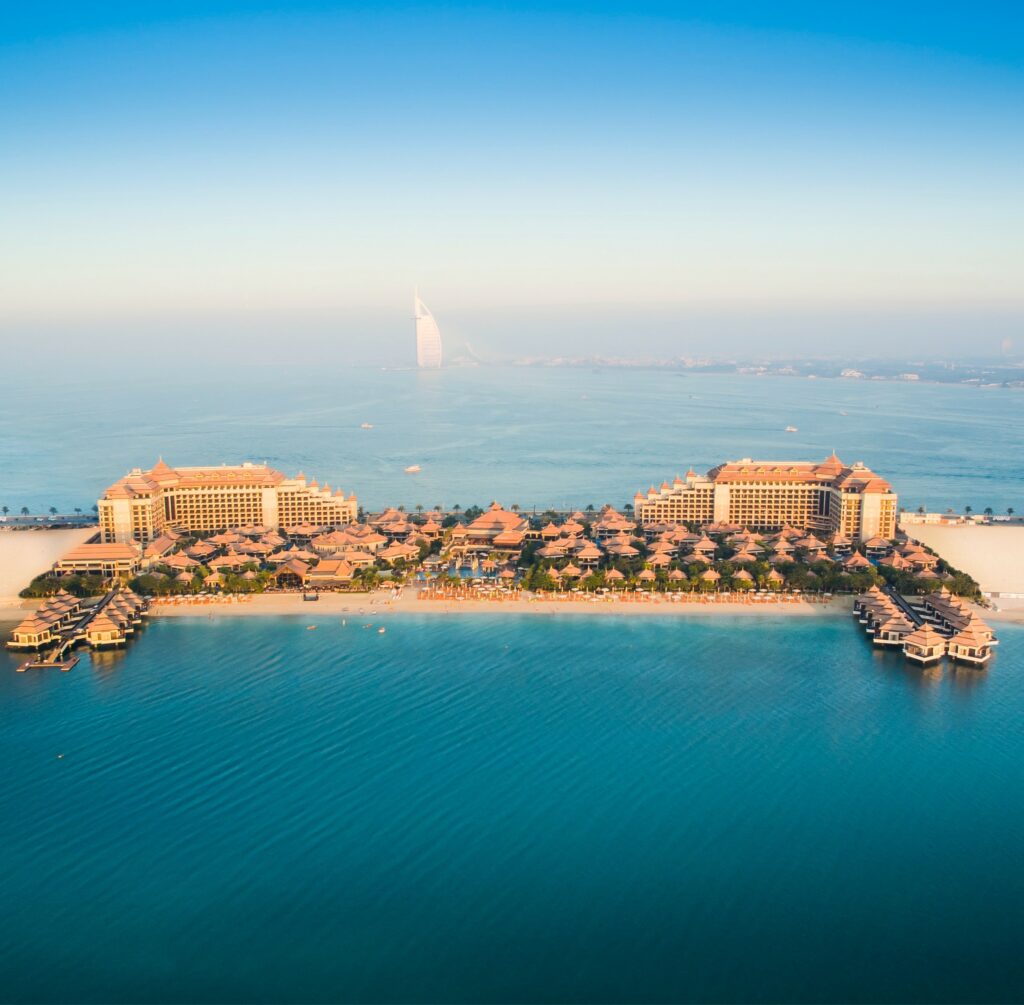
Thai Elegance Meets Modern Luxury
Anantara The Palm Dubai Resort is a masterpiece of Thai-inspired architecture, seamlessly blending cultural heritage with contemporary luxury in the heart of Palm Jumeirah. Designed by PGSI and built by CK Architecture Interiors, the resort’s aesthetic draws from traditional Thai influences, featuring intricate carvings, rich wood paneling, and elegant decorative details that create an atmosphere of refined serenity.
The interiors reflect a harmonious balance of natural elements and modern sophistication. Rooms and villas are adorned with a soothing palette of whites and earth tones, complemented by dark wood accents and hand-carved details. Expansive French windows open onto private terraces, offering breathtaking views of the resort’s serene lagoons, lush gardens, or pristine beachfront.
A highlight of the resort’s design is its exclusive overwater villas—the only ones of their kind in Dubai. These luxurious accommodations feature private decks, floor-to-ceiling windows, and glass-floor panels that provide a unique glimpse into the marine world below. Meanwhile, the Beach Pool Villas offer direct beach access and private infinity pools, ensuring unparalleled privacy and relaxation.
The resort’s architectural vision extends to its three lagoon pools and an infinity-edge pool, designed to enhance the tranquil ambiance. Framed by lush greenery and flowing water features, these spaces invite guests to unwind in a setting that seamlessly integrates nature with indulgent comfort.
Beyond aesthetics, Anantara The Palm Dubai Resort embraces sustainability and innovation in its design. The resort features a state-of-the-art hydroponic farm, producing fresh, pesticide-free greens for its culinary offerings. This cutting-edge facility, based on Controlled Environment Agriculture (CEA) principles, uses advanced LED lighting and integrated water circulation to minimise environmental impact while ensuring the highest quality produce.
Anantara The Palm also pioneers eco-friendly hospitality with electric vehicle services, dedicated EV charging stations, and paperless check-ins that streamline guest experiences while reducing waste. Digital QR codes and interactive screens provide seamless access to information, reinforcing the resort’s commitment to sustainability-driven innovation.
From its thoughtfully curated design to its forward-thinking approach to sustainability, Anantara The Palm Dubai Resort stands as a benchmark of architectural excellence in the Middle East. Offering an immersive escape that marries Thai heritage with Dubai’s modern grandeur, it remains one of the region’s most beautifully designed and unique luxury destinations.
ME by Meliá Dubai, UAE
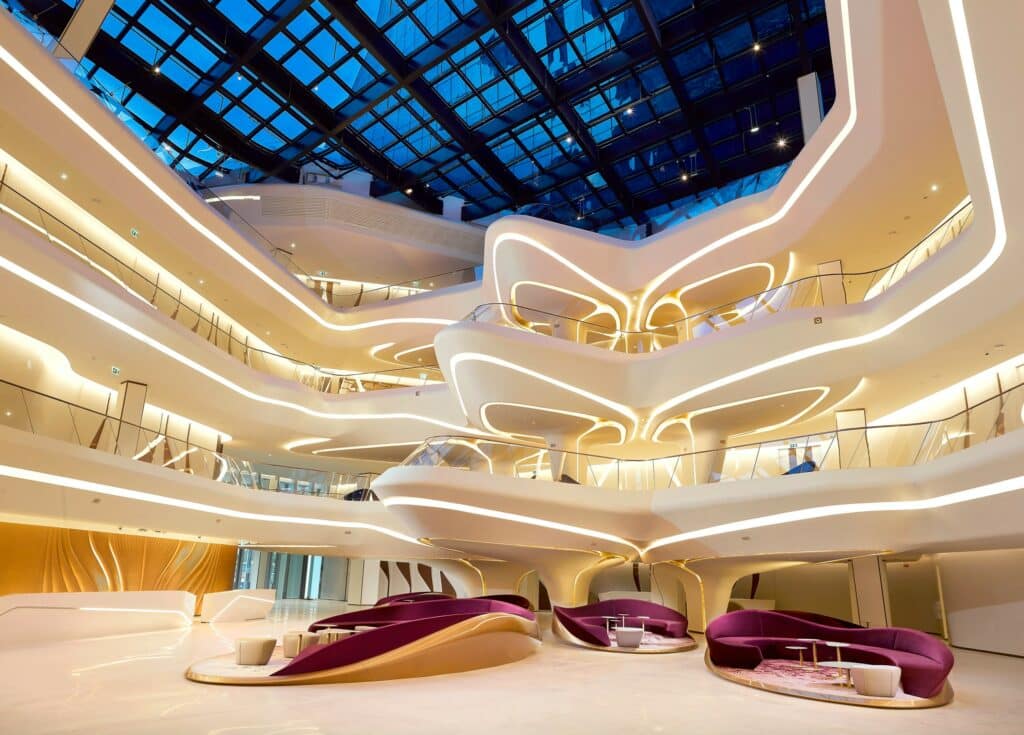
A Living Work of Art
In a city where architectural marvels define the skyline, ME by Meliá Dubai stands apart—not just as a hotel, but as a masterpiece of design and innovation. Situated within The Opus, a striking landmark envisioned by the late Dame Zaha Hadid, this hotel is the only one in the world where Hadid’s visionary touch extends to both the exterior and interior, making it a true testament to her legacy.
Designed by Zaha Hadid Architects, ME by Meliá Dubai is a fluid, sculptural space where architecture, art, and technology converge. The Opus itself is a stunning asymmetrical cube with a dramatic void at its centre, seamlessly connecting two mirrored towers through a futuristic steel bridge. Comprising 4,500 unique glass panels, the façade reflects Dubai’s dynamic skyline, embodying Hadid’s philosophy of organic form meeting function.
Inside, the hotel is a continuation of Hadid’s avant-garde aesthetic, where spaces flow effortlessly, curving and merging like liquid architecture. The four-story atrium, adorned with sweeping balconies and pristine white marble floors, serves as a breathtaking focal point, evoking a sense of movement and transformation. Each guestroom tells a story, drawing inspiration from Dubai’s desert landscapes and night sky, while featuring Hadid-designed furniture, fixtures, and ambient lighting.
Beyond its striking visuals, ME by Meliá Dubai is a hub of creativity. In 2024, Level 3 was transformed into a dynamic art gallery, showcasing contemporary exhibitions across various disciplines—from fashion to sculpture. This evolution has cemented the hotel as a cultural destination, where artistic expression thrives alongside architectural brilliance.
Sustainability is also woven into its DNA. The Opus façade optimises natural light, reducing heat absorption and minimising energy consumption. Inside, smart room technology allows guests to personalise their experience, adjusting lighting, temperature, and privacy settings at the touch of a button. The hotel also integrates LED lighting, motion-sensor climate control, and water-saving fixtures, aligning luxury with eco-conscious living.
For those seeking a sensory journey beyond traditional hospitality, ME by Meliá Dubai is more than a place to stay—it is a living, breathing work of art, where Zaha Hadid’s signature curves, futuristic vision, and architectural genius come together in an unparalleled expression of design.
Rixos Marina Abu Dhabi, UAE
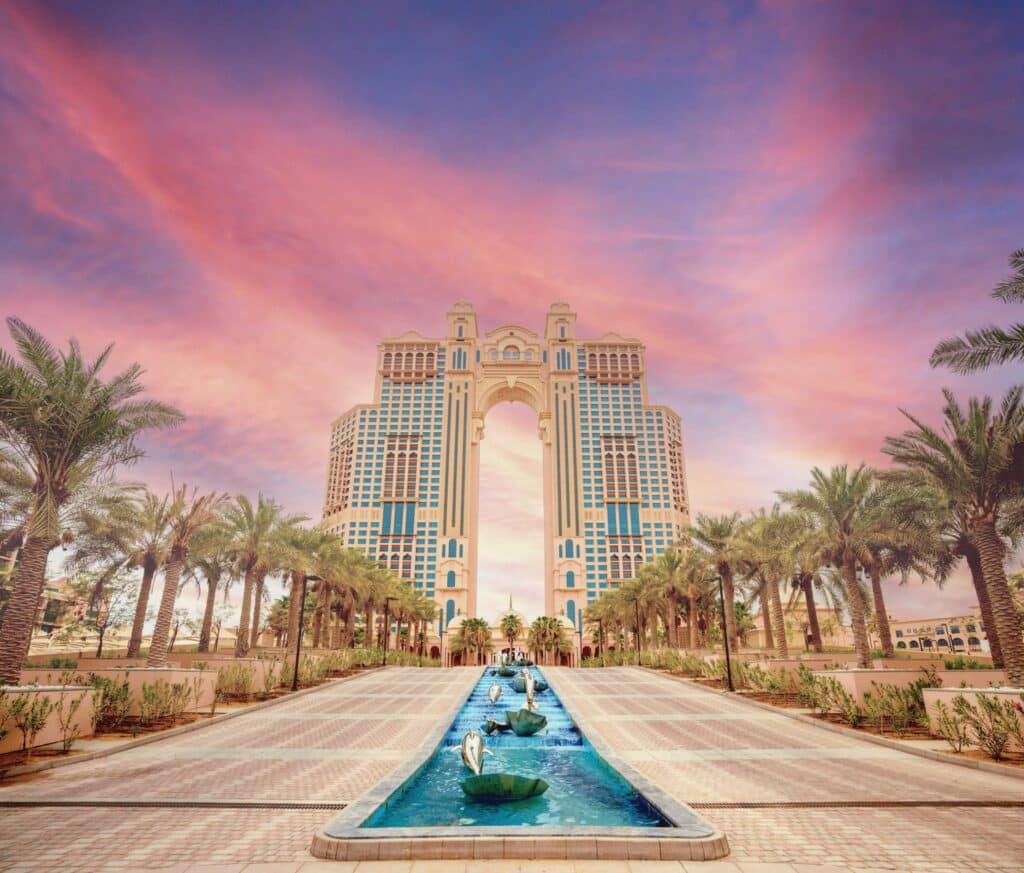
From Seafaring Roots to Skyline Icon
Rixos Marina Abu Dhabi stands as a striking architectural masterpiece, seamlessly blending sophisticated aquatic elements with contemporary Arabesque design. This iconic landmark narrates Abu Dhabi’s transformation from an ancient seafaring hub to a cosmopolitan metropolis. The hotel’s facade is a bold fusion of classic and postmodern styles, adorned with traditional Arabian motifs reimagined in a modern aesthetic. This design philosophy embodies both the heritage of Rixos Hotels and the essence of Arabic hospitality.
Inside, the hotel’s interiors continue this visual narrative, combining marine-inspired artistry with Arabesque influences to create an atmosphere of understated opulence. Drawing inspiration from Abu Dhabi’s maritime legacy, the design pays homage to the emirate’s journey from a seafaring village to a thriving global destination. The seamless fusion of Arabic and Turkish cultural elements further enhances its identity, making Rixos Marina Abu Dhabi more than just a luxury hotel—it is a lifestyle hub that reflects the emirate’s past, present, and future.
A defining feature of the hotel is its breathtaking 38-story twin towers, connected by an iconic arch that dominates the capital’s skyline. This grand structure not only provides an architectural spectacle but also offers guests panoramic, uninterrupted views of the Arabian Gulf and the dynamic cityscape. Inside, marine-inspired artistry comes to life with details such as a captivating five-meter chandelier designed to mimic a floating jellyfish, dolphin sculptures, and serene fountains at the entrance—each element reinforcing the hotel’s deep connection to the ocean.
Beyond aesthetics, Rixos Marina Abu Dhabi integrates sustainability at its core. The hotel maximises rooftop space with 525 solar panels, generating 2,000 KW of energy daily to support its water heating system, significantly reducing its carbon footprint. Motion sensors and LED lighting throughout the property further enhance energy efficiency, aligning the hotel with Abu Dhabi’s broader environmental initiatives.
Innovation is also central to the guest experience. A state-of-the-art Building Management System, intuitive room controls, and three massive digital screens spanning the building’s exterior establish Rixos Marina Abu Dhabi as a technologically advanced hospitality destination. By replacing traditional printed materials with digital buffet tags, NFC menus, and interactive screens, the hotel not only enhances guest convenience but also significantly reduces paper waste, reinforcing its commitment to sustainability.
With its unparalleled design, architectural grandeur, and forward-thinking sustainability measures, Rixos Marina Abu Dhabi stands as a beacon of modern luxury—an unmistakable landmark that defines the skyline of the UAE’s capital.
Erth Abu Dhabi, UAE

The Most Majestic Arabian Tent Ever Built
The creation of Erth Abu Dhabi was the result of a visionary collaboration between the late Sheikh Zayed Al Nahyan and renowned French architect Roger Taillibert. Their shared ambition was to design a landmark that seamlessly merged contemporary innovation with cultural heritage, symbolising the unity of two architectural philosophies. Taillibert famously described the project as “the largest Arabian tent ever conceived,” a nod to its sweeping form that honours the region’s nomadic traditions while embracing modern engineering and design.
The striking exterior of Erth Abu Dhabi takes inspiration from the falcon, a national symbol of the UAE, with its wings spread in mid-flight—representing power, resilience, and grace. Within the East Wing, the ‘Wind Whisperers’ installation features six sculptural elements that capture the fluid motion of sails on a voyage, paying homage to the region’s maritime heritage. These dynamic forms add movement and depth, creating an immersive experience as guests navigate the space.
Beyond its architectural brilliance, Erth Abu Dhabi is committed to sustainability. A state-of-the-art water filtration and dispensing system has been introduced to eliminate single-use plastic bottles while providing guests with fresh, high-quality drinking water. The system removes bacteria, sediment, and chlorine, ensuring clean and great-tasting water. Regular laboratory testing guarantees compliance with UAE health and safety standards, while a specialised refilling team, trained in food safety and hygiene, ensures strict quality control. Producing 500 litres of still water daily, the system meets guest needs efficiently while minimising waste.
Technology plays a vital role in enhancing efficiency and the guest experience at Erth Abu Dhabi. A smart housekeeping system provides real-time updates on room status and guest requests, allowing staff to respond swiftly. At the front office, a paperless e-registration system streamlines the check-in process, reducing wait times and paper waste. In the hotel’s restaurants, QR code-based payment solutions enable guests to settle bills instantly, offering a seamless and contactless transaction experience. The system also allows bill splitting and multiple payment methods for added convenience.
By harmonising architectural innovation, sustainability, and advanced technology, Erth Abu Dhabi stands as a landmark that embodies the essence of modern luxury while staying true to the region’s cultural identity. A testament to the vision of Sheikh Zayed Al Nahyan and Roger Taillibert, it continues to redefine excellence in Middle Eastern hospitality, bridging the past and the future in a truly remarkable way.
Mövenpick Resort Al Marjan Island, UAE
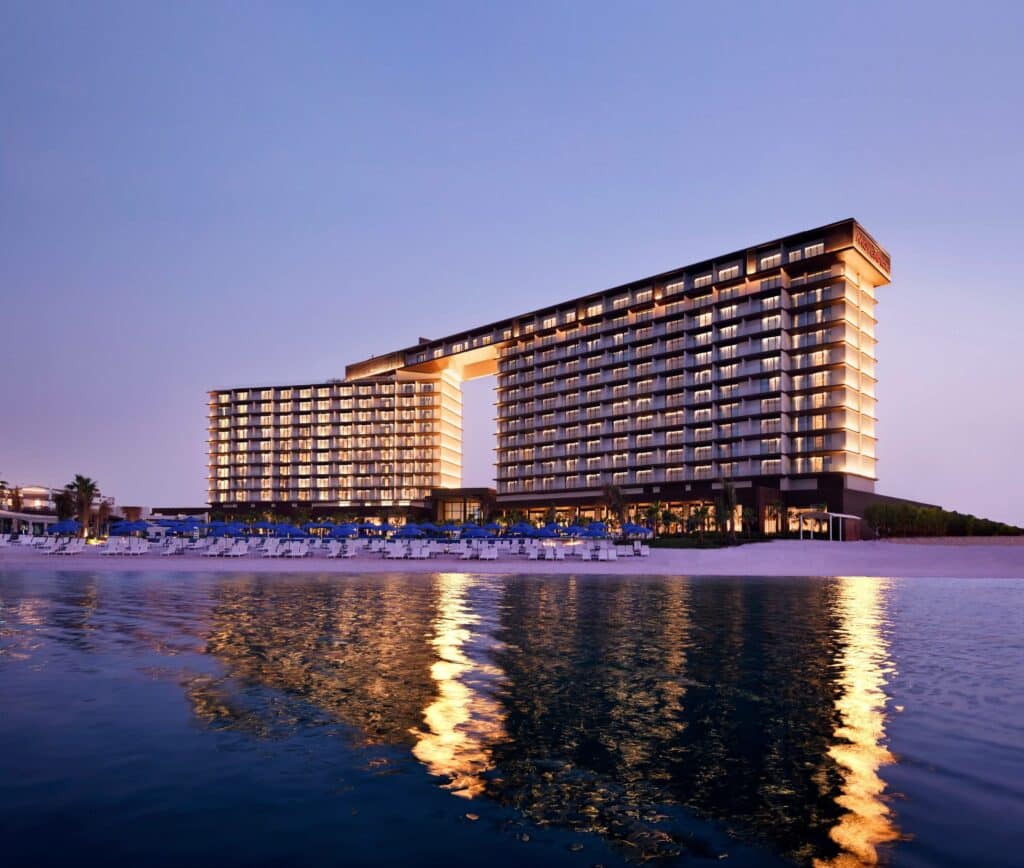
A Coastal Sanctuary of Design and Sustainability
Set against the shimmering shores of Ras Al Khaimah’s Marjan Island, Mövenpick Resort Al Marjan Island is a striking fusion of modern luxury and coastal serenity. Inspired by the effortless elegance of island living, the resort’s architecture is a testament to contemporary sophistication, seamlessly integrating with its breathtaking waterfront surroundings.
Designed to immerse guests in tranquility, the resort embraces an airy, open-concept aesthetic with floor-to-ceiling windows that frame uninterrupted views of the Arabian Gulf. The interiors reflect a refined blend of neutral tones, organic textures, and natural materials, evoking an atmosphere of warmth and understated opulence.
At the heart of the resort’s design is a remarkable feat of engineering—the Panoramic Bridge. Spanning 160 meters, it stands as the longest suspended bridge in the Northern Emirates, connecting the resort’s twin towers and offering unparalleled views of the coastline. This elevated structure is home to the resort’s most exclusive accommodations, providing an intimate and luxurious retreat above the tranquil waters.
Art is an integral part of the resort’s identity, with carefully curated pieces from regional and international artists enhancing its visual appeal. Each dining venue offers a distinct aesthetic and ambiance, ensuring every visit is a new sensory experience. Guests can indulge in the refined elegance of Boons, a contemporary French brasserie; embrace the laid-back coastal charm of Ula, a bohemian beachside haven; or take in the glittering skyline at Neo Sky Bar, a stylish rooftop destination. From the chic sophistication of Moca in the lobby to the vibrant culinary experience at The Market, every space within the resort is thoughtfully designed to inspire and delight.
Beyond aesthetics, Mövenpick Resort Al Marjan Island is a leader in sustainable hospitality. The resort integrates cutting-edge eco-friendly solutions, from energy-efficient lighting and automated climate control to water conservation initiatives that minimise environmental impact. A dedicated in-house water bottling system and a zero-plastic policy reinforce its commitment to responsible tourism, while a Chef’s Garden supplies fresh, locally grown ingredients to its restaurants. By partnering with local farms and suppliers, the resort ensures not only the highest quality produce but also a commitment to community-driven sustainability.
With its harmonious blend of architectural innovation, artistic expression, and eco-conscious design, Mövenpick Resort Al Marjan Island redefines luxury hospitality in the Middle East. Whether guests seek a serene beachfront escape or a refined cultural experience, this exceptional resort offers a journey that is both indulgent and sustainable.
Six Senses Zighy Bay, Oman
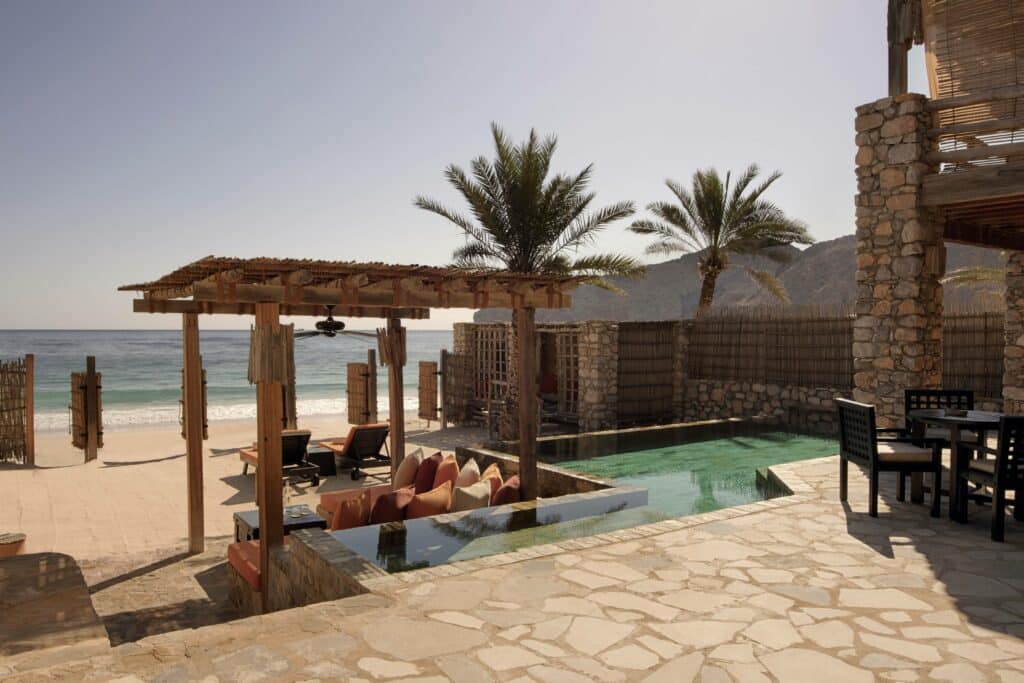
Omani Heritage & Sustainable Luxury
Situated between the rugged mountains and serene shores of Oman’s Musandam Peninsula, Six Senses Zighy Bay is an architectural gem that blends traditional Omani design with sustainable luxury. Inspired by ancient villages, its villas are crafted from locally sourced stone and timber, featuring wind towers, shaded courtyards, and private pools that seamlessly integrate with the natural surroundings.
The resort’s layout mirrors an authentic Omani settlement, with sandy pathways leading to intimate majlis seating areas and secluded beachfront retreats. Every detail, from handcrafted wooden lattices to vibrant textiles, enhances the sense of place while maintaining a refined, minimalist aesthetic.
Sustainability is woven into its design, with solar energy, greywater recycling, and natural cooling techniques reducing environmental impact. Guests can arrive by mountain drive, speedboat, or even paraglide down to the beach—each approach offering a breathtaking introduction to this one-of-a-kind retreat.
Six Senses Zighy Bay is more than a resort; it’s a testament to thoughtful, responsible design, where heritage and innovation create an unforgettable experience.




